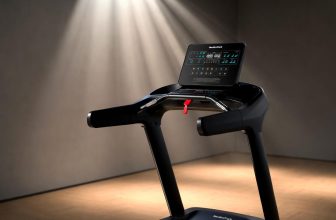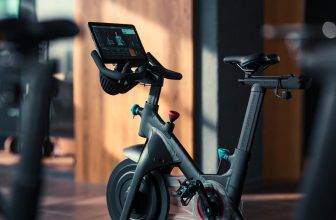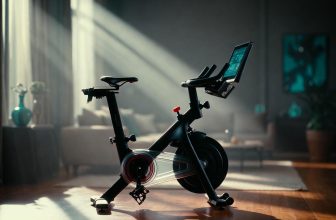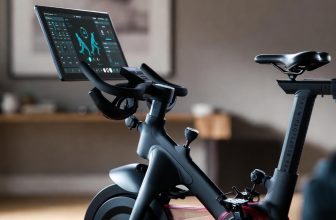Table of Contents
As an Amazon Associate, I earn from qualifying purchases.
Should I Buy a Stationary Bike?
No products found.
Yes, you should buy a stationary bike if you want a convenient, low-impact way to improve fitness and burn calories, but consider your goals, budget, and space first.
Benefits of Owning a Stationary Bike
Stationary bikes offer a practical fitness solution. They deliver low-impact cardio, reducing joint stress compared to running—ideal for beginners or those with knee issues. A 2017 Physical Therapy study found recumbent bikes cut knee strain by 25% versus upright models. You can burn 260-400 calories in 30 minutes (Harvard Health), supporting weight loss when paired with a calorie deficit.
Convenience stands out: no weather worries, no gym commute. A 2022 Sports & Fitness Industry Association survey showed 17 million Americans use stationary bikes, reflecting their home workout appeal. They also boost heart health—the American Heart Association links 150 minutes of weekly cardio to a 35% lower risk of cardiovascular disease.
Cost Considerations and Value
Stationary bike prices vary widely:
- Budget: $200-$500 (e.g., YOSUDA Indoor Bike).
- Mid-range: $500-$1,000 (e.g., Bowflex C6).
- Premium: $1,000-$2,500+ (e.g., Peloton Bike+).
A 2024 CNET analysis found premium models last 3-5 years longer with heavy use, offering better value for frequent riders. Budget bikes suffice for casual use but may lack durability or smart features. Subscriptions (e.g., Peloton’s $44/month) add cost but unlock guided workouts. Compare this to a gym membership—$40-70/month (Statista)—and a bike often pays off within a year if used consistently.
Check gym membership costs at Statista.
Space and Lifestyle Fit
Space matters. Upright and spin bikes need 4×2 feet, while recumbents take 6×3 feet. Measure your area—apartments favor compact models like the Bowflex C6. Noise varies: magnetic resistance bikes (e.g., Schwinn IC4) are quiet, ideal for shared living; air bikes (e.g., Rogue Echo) are louder but offer intense workouts.
Lifestyle fit is key. Busy schedules benefit from instant access—no travel time. A 2023 Which? survey found 85% of home equipment buyers value convenience over gym perks. If you prefer social workouts, a gym might suit better, but apps like iFit or Zwift add community to home biking.
Fitness Goals and Effectiveness
Stationary bikes align with multiple goals:
- Weight Loss: HIIT on a spin bike burns up to 400 calories in 30 minutes (ACE data).
- Endurance: Steady-state rides build stamina—30-60 minutes at moderate pace.
- Rehab: Recumbents ease joint pain while improving mobility.
A 2019 British Journal of Sports Medicine review showed HIIT on bikes reduced fat by 9% more than moderate cardio in less time. However, they don’t build muscle like weights—pair with strength training for balanced fitness. The Mayo Clinic recommends 300 minutes weekly for significant fat loss, achievable with consistent rides.
Learn more about cardio benefits at American Heart Association.
Stationary Bike vs. Alternatives
| Option | Cost (Upfront) | Calories Burned (30 min) | Joint Impact | Convenience |
|---|---|---|---|---|
| Stationary Bike | $200-$2,500 | 260-400 | Low | High |
| Treadmill | $300-$2,000 | 300-450 | High | High |
| Gym Membership | $40-$70/month | Varies | Varies | Moderate |
| Outdoor Cycling | $100-$1,000 | 240-350 | Moderate | Low |
Bikes edge out treadmills for joint health and match calorie burn at vigorous intensity. Outdoor cycling saves money but depends on weather and safety. Gyms offer variety but lack home convenience.
Potential Drawbacks to Consider
- Monotony: Repetition bores some—smart bikes with classes (e.g., NordicTrack S22i) help.
- Upfront Cost: Higher than basic gear like jump ropes ($10).
- Space: Limited rooms restrict options.
- Maintenance: Cheap models may need repairs within 1-2 years.
A 2023 Consumer Reports survey noted 15% of users stopped biking due to boredom, underscoring the value of engaging features.
Explore workout variety tips at Consumer Reports.
Who Should Buy a Stationary Bike?
- Busy individuals: No commute, quick sessions.
- Joint pain sufferers: Low-impact relief.
- Home workout fans: Weatherproof cardio.
- Budget-focused: Long-term savings over gyms.
Skip it if you love outdoor variety, need heavy strength training, or lack space. Test a friend’s bike or gym model first to gauge interest.
FAQ
1. Is a stationary bike worth the investment?
Yes, if you’ll use it 3-5 times weekly—it rivals gym costs within a year.
2. Can I lose weight with a stationary bike?
Absolutely—burn 260-400 calories per session with a calorie deficit.
3. How much space do I need?
Upright bikes need 4×2 feet; recumbents take 6×3 feet—measure first.
4. Are there cheaper alternatives?
Yes, outdoor bikes or jump ropes cost less but lack all-weather reliability.
Final Thoughts
A stationary bike suits you if convenience, low-impact exercise, and home fitness align with your life. It’s a smart buy for weight loss or cardio goals, offering value over gym fees with consistent use. Weigh space, budget, and workout preferences—premium models like Peloton add flair, but budget options like YOSUDA deliver results. Test the waters, and it could be your ticket to sustainable fitness.







